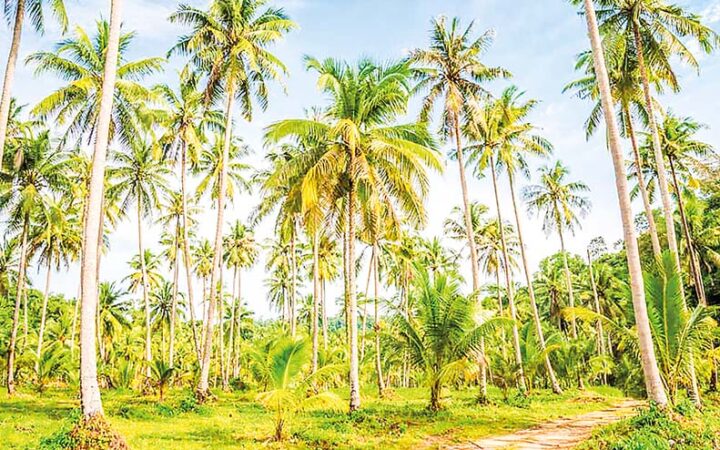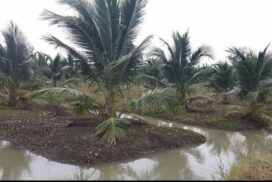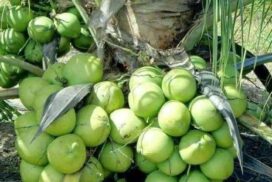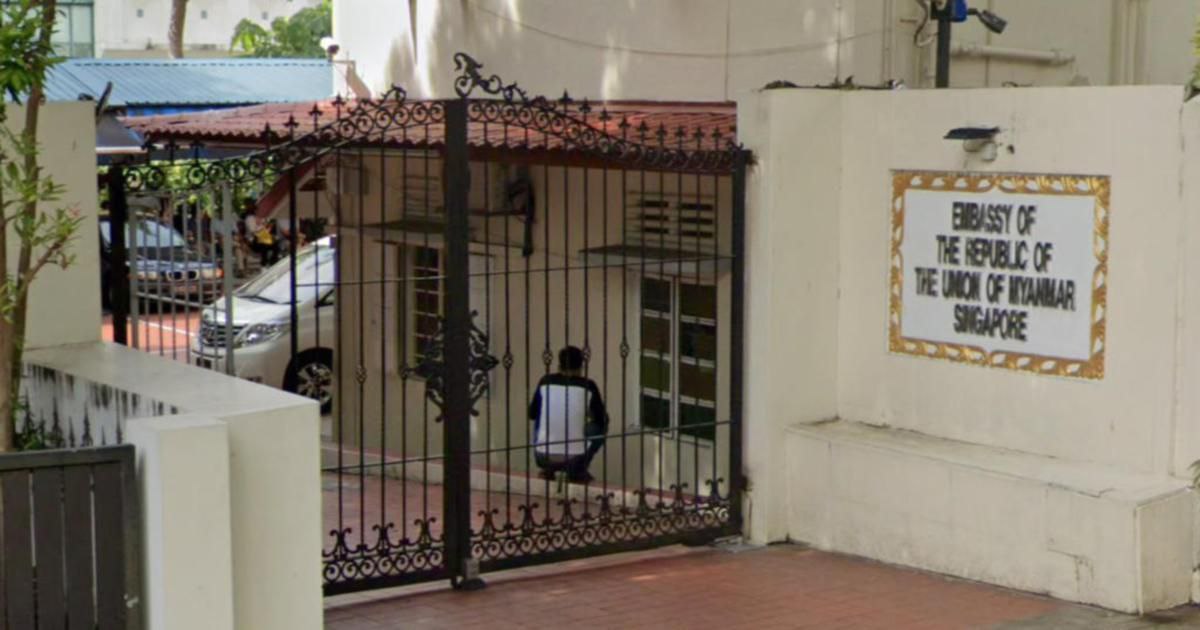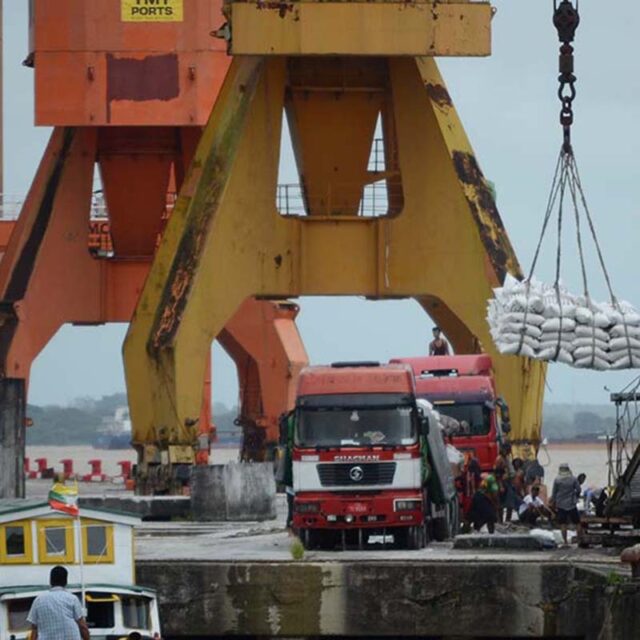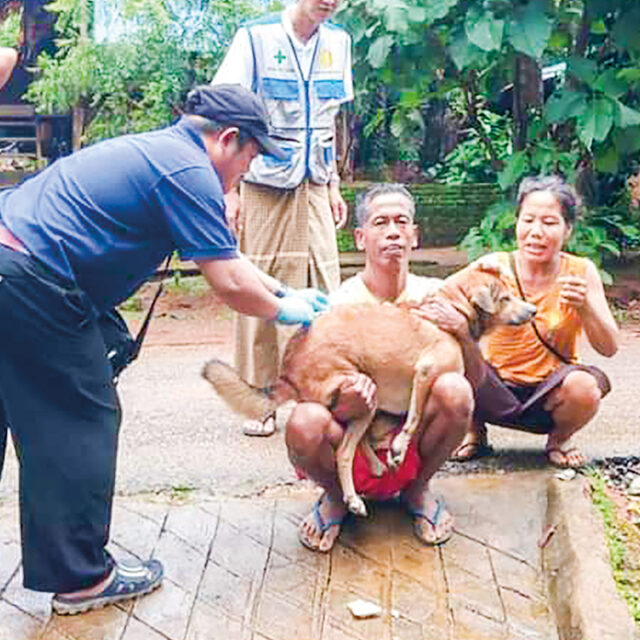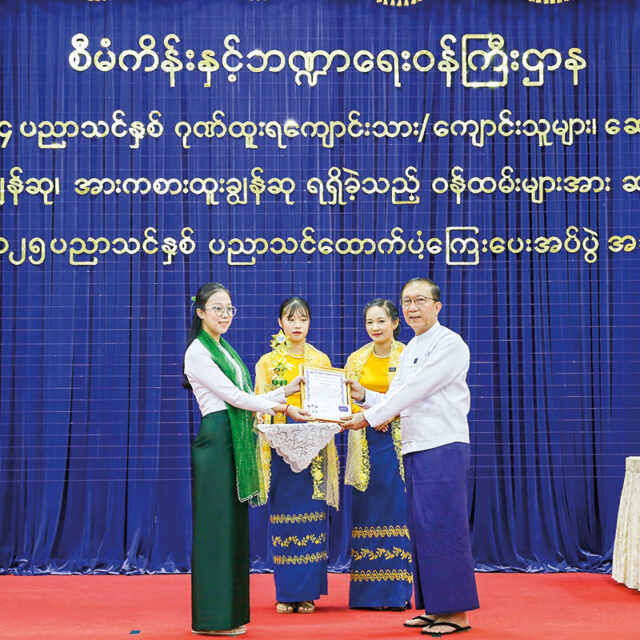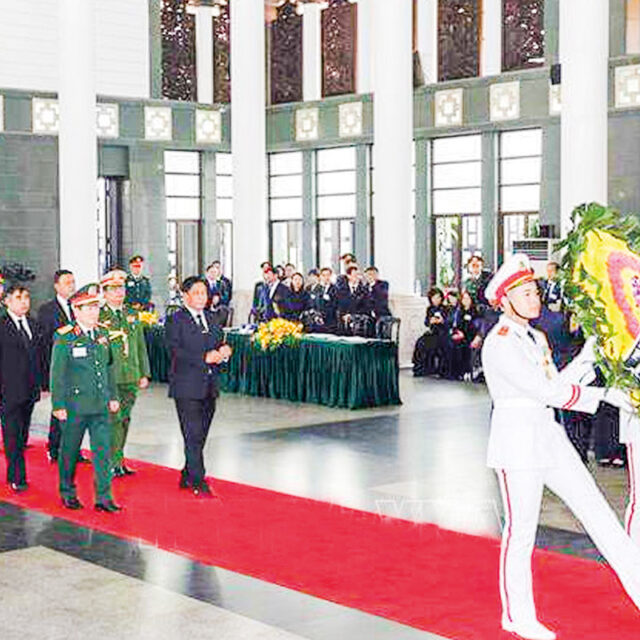The view of coconut palm and betel trees alongside the roads and the riverbank is enchanting when one visits the delta regions. The palm and tamarind trees can be considered as the significant feature of some central Myanmar Regions, while coconut, nipa palm, betel tree and habitual mangrove give prominent images of the delta region.
The coconut palm is commonly found in the delta region. We can see the coconut and betel tree-lined roads across the country. Nipa palm and mangroves can be found in the areas close to the sea, U Aung from Hlinebon village of Mawgyun Township told the Global New Light of Myanmar.
The palm tree climbing business used to thrive in the central Myanmar Region. Now, some palm trees were cut down. Additionally, mangrove forests in the delta region are also suffering from overexploitation. Naturally grown mangroves can prevent coastal erosion.
Lucrative coconut palm
The commercially valued coconut palm is mostly found in the delta region. The total yield rate is over 400 million nuts per annum and the delta region accounts for the production of 130 million nuts. Half of the production is designated for local consumption and the remaining is sent to other regions.
Myanmar exported 206 tonnes of coconut worth US$0.082 million to China, Bangladesh and other foreign countries in the 2021-2022 financial year. The export volume climbed to 319 tonnes with an estimated value of $0.128 million in the 2022-2023 FY, as per the official statistics released by the institution concerned.
With coconut export booming, the State pushed forward to the expansion of coconut palm cultivation. As the coconut export to Bangladesh has increased year over year, the coconut market in Ayeyawady Region and Rakhine State has accelerated its momentum and has affected the domestic market.
Coconut sap market trends
Coconut is widely used in Myanmar’s traditional snack delicacies and some recipes. It’s also utilized in the coconut extract business. It is highly demanded and used in charity feasts during the Myanmar New Year Festival.
Moreover, coconut consumption among Yangonites has risen on account of health benefits. Coconut sap contains 200-1,000 mL water and it’s natural juice with low cholesterol. Fresh coconut sap provides a good source of nutrients (such as vitamin C, potassium, iron, calcium, magnesium, vitamin B, amino acid, copper and other minerals) rather than dried coconut.
Nutrients and vitamins in coconut sap boost the immune system and coconut sap containing cytokinin, plant hormones, is believed to have anti-ageing and anti-cancer properties, nutritionists said.
Health benefits in coconut sap treat dehydration due to mild diarrhoea, vomiting and electrolytes loss from sweating heavily. It helps boost energy levels. Thanks to health benefits, the coconut sap market has become a trend in Yangon Region. The vendors sell them in the quarters of the city.
With the coconut sap market growing, it’s priced at K700-1,200 per nut.
Coconut price surges on high demand
The price of coconut jumped to K1,500 per nut from K500-600 in the Thingyan Festival this year. The mature coconut with stem designated for rituals and spiritual offerings fetched K2,500 per nut on 23 July, Daw Thazin, a buyer from South Okkalapa Township, told the GNLM.
There are coconut depots at Kyimyintdine’s jetty where coconut is distributed in the city. Before 2010, there were a large number of coconut and banana depots at Lanmadaw jetty when the water transport to the delta region developed. At present, ferry trips to some towns have declined. The number of businesses of coconut, banana and duck egg has decreased at that jetty accordingly.
A mature coconut is offered at a good price of K1,500-2,000 per nut in southern Shan State. The dried coconut is priced at K500-1,000 per nut depending on the size. The coconut for juice is worth K1,500 per nut. Yangon City is the supplier of coconut for the Taunggyi market. Bayintnaung Wholesale Commodity Centre has only a handful of coconut and Areca nut depots from which they are sent to upper Myanmar regions. Coconuts from the Pathein area are supplied to Bayintnaung through land transport.
Dried coconut meat is sent to coconut oil processing factories. Coconut rope is made from dried coconut husks. Some residents from the Pathein area made coconut shells into charcoal briquettes and sent them to the Yangon market. Coconut branches can be used as broomsticks. Moreover, the coconut shell stepping exercise delivers health benefits.
The perennial plant creates job opportunities and generates income
There are two types of coconut trees; tall and dwarf species. Bogale Township located in the Ayeyawady Delta relies on agriculture (paddy) and offshore fishing.
Coconut planting is also thriving in the township, covering 10,749 acres with the production of over 20 million nuts. Masein, Talpin (3), Phoneshwelone, Kansu, Haingsi, Kunthichaung and Sinchaung villages are the leading producers of coconut in the region. This article is written to mark the coconut as a perennial crop plant that creates jobs in delta regions and bags foreign income. Translated/EM
